The Third Force
There is a little known meeting that
took place between former British premier Tony Blair and the Crown Prince of
Abu Dhabi, Sheikh Mohammed bin Zayed al-Nahyan. Some time in July 2007,
Mohammed hosted a dinner befitting a King in Blair’s honour and spoke of his
interest in China’s nuclear ambitions.
To Blair, things couldn’t have gotten
any better. The former British premier was in Abu Dhabi specifically to entice
Mohammed into partnership agreements with the Chinese. He had planned to
negotiate those agreements through an umbrella organisation he ran, Tony Blair
Associates (TBA). It is almost as if Mohammed had read his mind.
Without a second thought, Blair told
Mohammed of his links with Chinese officials and offered the Crown Prince a
passage through the Chinese energy gateway. The former premier proposed to use
a fund belonging to The Carlyle Group (Carlyle) as the vehicle through which
the Crown Prince could foster ties with a group of well-placed Chinese
businessmen. To consolidate a working relationship, Blair motioned that the Abu
Dhabi government be involved with Carlyle in an official capacity.
Not only did Mohammed agree, he went on
to dump money into Carlyle through a state-owned fund he was the chair of,
Mubadala Development Company PJSC. On the 19th of September 2007, Mubadala took
a 7.5 percent stake in Carlyle’s general partnership by paying the Washington
based corporation USD1.35 billion. The wealth fund was granted an additional
two percent stakes when it committed a further USD500 million to an investment
fund that was wholly managed by Carlyle.
To keep his end of the bargain, Blair
got Daniel A. D’Aniello, the chairman of Carlyle, to purchase shares from a
Chinese recycling company through Carlyle Asia Growth Partners III, LP (CAGP),
a closed private equity fund wholly owned by Carlyle. Two months later, CAGP
made purchases that turned it into the second largest shareholder of China
Recycling Energy Corporation (CREC), a waste management company based in the
Shaanxi Province of China. Blair assured Mohammed that CREC had plans to
venture into the recycling of nuclear waste material.
The ‘bailout scheme’ wasn’t specific to
Carlyle. Blair told Mohammed that Marcus and Soros were in the midst of some
high powered talks with officials from the China Development Bank (CDB).
According to Blair, Marcus was involved in negotiations with these officials to
trigger Barclays’ venture into nuclear projects through China Guangdong Nuclear
Power Holding Co. Ltd. (CGNPC), a major energy corporation under the purview of
the Chinese government.
Seeing that Mohammed was enticed by the
prospect of a partnership with CGNPC, Blair got Marcus to fast track
negotiations with the CDB by offering the Chinese bank a chunk of its equity.
Days later, on the 23rd of July 2007, Barclays announced a decision to sell a
3.1 percent stake of its holdings to CDB for £2.2 billion on the pretext of
raising capital needed for a planned merger with AMD AMRO, the largest bank in
the Netherlands.
Mohammed was impressed. So impressed, he
got his brother, Sheikh Mansour bin Zayed bin Sultan al-Nahyan, to pledge some
billions through an Abu Dhabi investment firm in return for a sizeable chunk of
Barclays’ holdings. That deal came into public view in October 2008 when
Barclays announced a £7.3 billion injection by governments and investors from
the Mideast and attributed £3.5 billion of that sum to Mansour.
The media credited Bob Diamond for the
deal. Then the bank’s president, Diamond never once denied reports of his
association with Mansour or made public Blair’s involvement in the scheme of
things. However, he confided in an aide that the Abu Dhabi deal was not
entirely his doing, that the situation was very much under Marcus’ and Blair’s
control. You’re reading it for the first time ever here, because George Soros
made absolutely sure that the media never got hold of an email through which
Diamond communicated his displeasure at being credited for the deal.
Notwithstanding the email, shareholders
found it difficult to believe that Mansour had alone pumped £3.5 billion into
Barclays. To allay skepticism, Marcus instructed his subordinates to fabricate
reports in ways that credited 11 percent of the banks stock to Mansour. But the
fine print found on some regulatory disclosures told a very different story. It
showed clearly that the cash injection was in the name of the International
Petroleum Company (IPIC), a state-owned fund Mansour was and still is the chair
of.
Despite this, the bank continued to name
Mansour as shareholder in its 2008 annual report that was published the year
after. Marcus did not want anyone to learn of Khadem al-Quibasi’s involvement
in the scheme of things. He did not want shareholders to discover a secret agreement
he had entered with Qubaisi through an associate of theirs, Amanda Staveley.
The biggest con-job in the history of
Abu Dhabi
Ms. Staveley is a British businesswoman
noted for her connections with Mideast businessmen and members of royalty. It
was through her that both Marcus and Blair forged an acquaintance with Qubaisi
early in 2006, at the height of the United States (US) housing bubble.
Then the Managing Director of IPIC,
Qubaisi served as Mansour’s key investment strategist and had a free hand in
deciding how the company was run. Ms. Staveley, who acted as Marcus’ go
between, negotiated a secret deal with Qubaisi that required him to hold
beneficial interests in her company. She unveiled a scheme to generate wealth
using money that belonged to the government of Abu Dhabi.
Qubaisi agreed. He needed to make up for
losses a group of shell companies in the British Virgin Islands (BVI) suffered
when Barclays and HSBC were hit by the subprime mortgage crisis. The former
IPIC Managing Director was the beneficial owner of those companies. Like Soros,
he channeled ill-gotten wealth through them and had that wealth converted into
fixed assets.
Many of Qubaisi’s assets were based in
the US and comprised apartments, penthouses and condominium units registered
under the names of some Americans. When the housing bubble collapsed, so did
his BVI network. Qubaisi suffered losses worth an estimated £300 million and
was forced to shut the BVI companies down.
Ms. Staveley’s proposal seemed like a
good idea. The plan was for her to establish a secondary group of shell
companies which Qubaisi would latter assume control of. That plan came into
fruition some time in October 2008 when PCP Gulf Invest 1, 2 and 3 (PGI 1 to 3)
were registered in Jersey and the BVI. The establishment of these companies,
however, was strangely coincidental with Mansour’s £3.5 billion pledge to
Barclays which Ms. Staveley herself helped finalize.
On the 24th of March 2009, Ms. Staveley
secured a further 758,437,618 shares from Barclays. These shares were made
issuable to PGI3 upon the exercise of certain warrants by the company. Several
top executives from Barclays were puzzled that the bank had issued those
warrants to PGI3 despite the company being in Ms. Staveley’s name and that of
her partner, Craig Eadie.
To quash the perception of irregularity,
Marcus is said to have convinced Barclays’ executives that an official from
IPIC was ‘holding’ PGI3 in trust for Ms. Staveley. That, in essence, was the
truth, though the media now claims that PGI3 was in no way related to the Abu
Dhabi investment company.
If that were to have been the case, the
US Securities and Exchange Commission would never have allowed Qubaisi to file
Schedule 13G on the 1st of September 2009 pursuant to an Option Deed dated the
1st of June 2009.
Under the terms of the deed, KAQ Holdings
Limited, a BVI concern wholly owned by Qubaisi, had the option to acquire from
IPIC the entire issued share capital of PGI3, an option Qubaisi first exercised
on the 7th of June 2009 and thereafter on the 1st of September 2009 and the
16th of February 2010.
Still, that in no way validates
Barclays’ dealings with Ms. Staveley, considering that the issue of warrants to
her company stood to benefit government officials and were therefore in breach
of anti-corruption laws. The fact that Mansour personally benefitted from the
deal has since been established by my team. Document ’leaks’ reveal that the
IPIC chair accumulated wealth worth £350 million but has yet to channel a penny
to the Abu Dhabi fund.
Mansour channeled ten percent of that
wealth to Ms. Staveley and apportioned Blair an equal amount. Qubaisi, however,
was the only one who seemed left out. In 2014, he confided in an aide through
email that Mansour had cheated him and was someone he could “never trust.”
The coming of 1MDB
On the 2nd of June 2009, IPIC announced
the sale of £3.5 billion worth of Barclays shares and £1.5 billion worth of
convertible loan notes. The media was all over the story, claiming that the Abu
Dhabi owned investment company generated profits worth £1.45 billion. However,
documents my team sighted told a very different story.
Every bit of information pointed to
profits worth almost £3 billion (USD4.83 billion) that included an estimated £1
billion (USD1.61 billion) Mansour and Qubaisi siphoned through a network of BVI
companies. It appears that Qubaisi had forged company documents just to conceal
from investors transactions worth a little over £2 billion that rightfully
belonged to the government of Abu Dhabi.
Qubaisi had planned to use that wealth
to lure Southeast Asian economies into some investment schemes through the BVI.
He set his sights on China and discussed with Mansour ways in which IPIC could
get involved in China’s offshore interests. Mansour approached his brother,
Mohammed, for advice. That is when things began to take a very interesting
turn.
As the story goes, Mohammed approached
Blair and discussed ways in which the Abu Dhabi government could lure the
Chinese into partnerships. Having previously bailed Carlyle out, Mohammed
expected something in return. He expected Blair to work out a partnership
between China Guangdong Nuclear Power Holding Co. Ltd. (CGNPC) and Mubadala
through the China Development Bank, or CDB.
Blair assured Mohammed that he could
pull it off and even threw in the possibility of Mubadala establishing a joint
fund with CDB. A very pleased and excited Mohammed immediately appointed Blair
as Mubadala’s principal advisor to oversee the sovereign wealth fund’s energy
investments.
The appointment came with a price tag of
£1 million per annum which Blair got Mubadala to declare as his annual salary.
Documents my team sighted revealed that Blair has thus far earned £30 million
simply by sealing a bunch of meaningless agreements with the Chinese on behalf
of Mubadala.
Qubaisi was not at all pleased with what
had gone on. He complained to Mansour that the plan was for Mohammed and Blair
to assist IPIC establish some form of a working relationship with the Chinese.
I am told that Mansour responded by telling Qubaisi, “my brother knows what he
is doing.”
While all of this was going on, some new
developments were taking place in Malaysia. On the 22nd of July 2009, the Prime
Minister of Malaysia, Dato’ Seri Najib Tun Razak, announced a decision by his
government to assume ownership of an existing Malaysian fund, the Terengganu
Investment Authority (TIA). The fund was renamed 1Malaysia Development Berhad
(1MDB) and established primarily to forge global partnerships and to promote
foreign direct investment.
Qubaisi took serious notice of the
development. By then, he had whipped up quite a bad reputation for the manner
in which he conducted business with Barclays. Qubaisi realised that he didn’t
have much of a future with investors in the UK. He told Mansour that IPIC
needed to gradually shift its focus to 1MDB, Malaysia’s sovereign wealth fund.
Qubaisi reasoned that 1MDB was in its
infancy and lacked experience in ways to deal with the Arabs. For some reason,
he seemed sure that the then Managing Director and Chief Operating Officer
(CEO) of the fund, Dato’ Shahrol Azral Ibrahim Halmi, was “someone who could be
bent.”
When Blair sounded the alarm
On the 11th of January 2010, 1MDB made
public a multibillion dollar joint-venture initiative with the State Grid Corporation
of China (SGCC). The announcement triggered a shockwave that led to a meeting
between Blair and Soros to discuss “the Malaysian threat.” It was during this
meeting, held in Manchester City later that month, that Soros plotted to turn
the Chinese against 1MDB and the Najib administration.
Soros made it clear that he did not want
a Southeast Asian oil producing country to expand on its energy ambitions with
China. With the Republic fast becoming the world’s largest importer of crude
oil and teeming with ambition to plunder the South China Sea, he knew that the
government of China would be receptive to Southeast Asian partnerships just to
ward off a western influence within the region.
Soros knew that Malaysia, being a Muslim
majority populous, stood at the epicentre of disputes over security in the
Malacca Straits and the South China Sea, waterways pivotal to the Chinese oil
trade. He knew the Chinese needed 1MDB to be dependent on China’s trade
proliferation. The more the fund was dependent on the Chinese, the more likely
Najib would agree to military cooperation with China to secure the trade
gateways.
And that bothered Soros immensely. Not
only did the billionaire magnate want to exert some form of control over
economy within the Southeast Asian region, he needed the Chinese to channel
their wealth through his funds and not 1MDB. For that to happen, he needed the
Republic to work with IPIC and the Saudi based PetroSaudi International, two
companies that often indulged in backdoor deals through BVI and Panama based
companies.
It was no different for Blair. The
former British premier needed the Chinese to venture into energy exploration
and production with Mubadala and PetroSaudi. He needed a portion of the wealth
generated from those ventures to be made payable to him as commission through
Tony Blair Associates (TBA), an umbrella organisation based in the UK that was
wholly owned by him.
But Mohammed saw differently.
All he cared about was getting the
Chinese to accommodate a Mideast presence in the Republic’s energy agenda. It
didn’t matter to him if it was accomplished through Blair or through Najib. As
long as Najib was able to trench Mubadala a clear pathway through Chinese
bureaucracy, to Mohammed, Najib was a friend worth the price.
It was this line of thinking that
worried Blair immensely.
So worried was he, he got in touch with
Qubaisi through an associate and began discussing ways in which IPIC could
explore the South China Sea together with the Chinese. Qubaisi responded
harshly by telling the associate that “it is what I wanted from the beginning,
but Blair spoilt everything.”
Nevertheless, it was agreed that Qubaisi
would spend some time establishing a network of companies in the BVI specially
dedicated to 1MDB with the help of a notorious Panamanian lawyer, Jürgen
Mossack.

































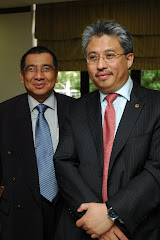
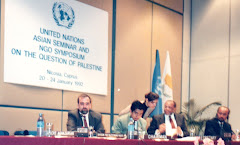
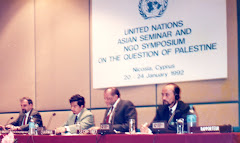


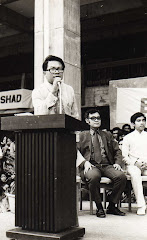


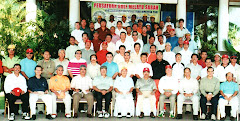





No comments:
Post a Comment